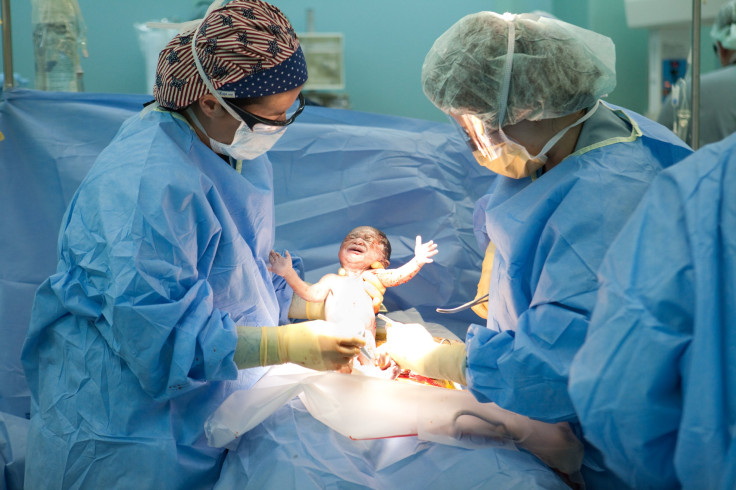More Than One Cesarean Section Poses Little Risk To Children's Health

For as long as Cesarean sections have been around — we’re talking since ancient times — both women and their health care providers have believed that getting a C-section rules out vaginal delivery for future pregnancies. They feared that during a subsequent, natural birth, the uterine scar could rupture and cause complications. But that may not be the case after all, according to a new study published in PLOS Medicine.
The authors say the paper is the first to examine the long-term health outcomes of second children born naturally to mothers who have previously had a C-section. They used Scottish health records from 1993 to 2007 to categorize whether children were born vaginally after an earlier C-section, or were planned for Cesarean delivery, in which case hospital staff and patients had advance preparation.
The authors also collected data from seven national databases, including the Child Health Systems Programme, which routinely records children’s health in schools. They looked for adverse outcomes, including asthma or inflammatory bowel disease at the time of hospital discharge, high body mass index and obesity at age 5, type 1 diabetes, learning disabilities, cerebral palsy, cancer, and death.
Of the 40,145 babies in the study, 45 percent were delivered by planned C-section and 22 percent by unscheduled C-section. Vaginal births accounted for the remaining 33 percent. Compared to those born naturally, children born by planned or repeat C-section were more likely to be delivered at an earlier gestational age and to weigh more at birth. They were also less likely to be breastfed at 6 weeks of age.
That said, the authors did not find statistically significant differences among women having a planned or unplanned C-section and women having a vaginal birth the second time around. In fact, the study’s senior author, Dr. Mairead Black of University of Aberdeen, told Time that these results are “reassuring for women who are considering a planned Cesarean and worried about how it might affect the health of their babies.”
For example, while the risk of hospitalization for asthma increased by 18 percent following planned and unplanned C-sections compared to natural delivery, there were no differences in the use of inhalers — a strong indicator of severe symptoms, Time reported. This link was weak at best, according to the study. And while the research showed elevated risks for learning disability and death in the children birthed through surgery, those findings could reflect the known risk of scar rupture during a vaginal birth after C-section, which ultimately leads to an unscheduled C-section and potential complications.
Health problems unrelated to the delivery could muddy the data in a study like this, but Time wrote that since most of the women in the study planned to have a second C-section given their previous success, leading Black and her team to be “reasonably certain that medical reasons for the surgery didn’t play a role in the results.”
However, there were some limitations. The study lacks the reasons women who had not planned on having a C-section did have one in the end. For example, if a woman had a C-section because her health care provider detected infant death, then the infant may have died from a related cause, not necessarily the operation itself.
More research needs to be done, but as is, Black and her colleagues believe women can be somewhat assured that a second C-section poses little risk to their babies.
Source: Black M, Bhattacharya S, Philip S, Norman JE, McLernon DJ . Planned Repeat Cesarean Section at Term and Adverse Childhood Health Outcomes: A Record-Linkage Study. PLOS Medicine. 2016.



























